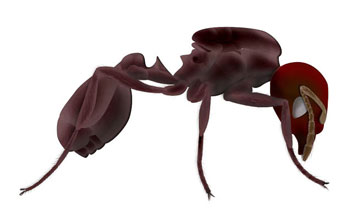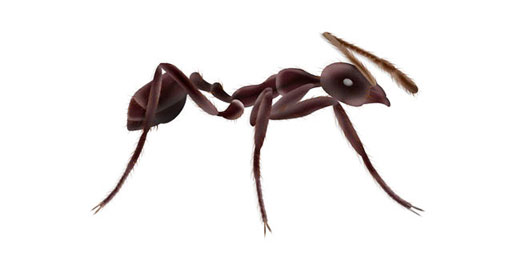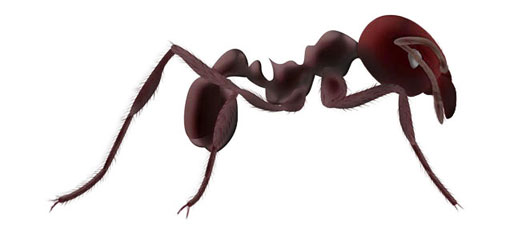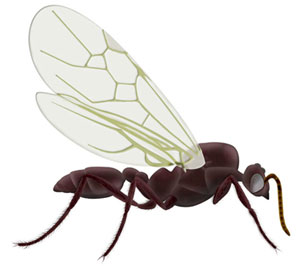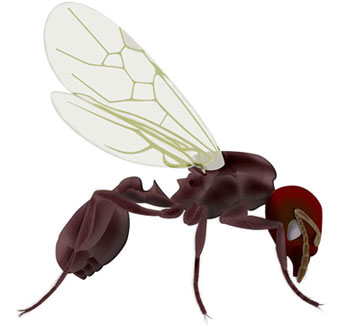Eusocial & Colony Behavior in Ants
Biology 342 Fall 2012
Celina Ortiz & Jason Swinderman
Ontogeny
Ontogeny describes lifetime development of an animal as determined by the interaction between its genes and environment. From the time it's an embryo till it's dying breath, ontogeny encompasses the changes an organism experiences during it's span of life.

Ants develop into different castes (small workers, large workers, or new queens) based largely on the nutrition they receive as larvae. This process by which nutrition determines subsequent caste development is called trophogenesis. Those fed more insects than seeds are more likely to become larger individuals. For example, Queen larvae receive more food and "royal jelly", a high sugar diet with lots of pantothenic acid and biopterin, while worker ants receive less of either. This is why generally Queen ants are much larger than worker ants. However, genetic differences also contribute and bias the larva's developmental pathway. Even once a caste is determined, nutritional, social (colony size), and genetic factors contribute to how large an individual may grow.
All eusocial insects are divided into castes. Ant colonies are no different. Once an ant has developed into a caste, it cannot change caste (with the exception of Princess into Queen). Ants in different castes have individual jobs and distinct phenotypes appropriate to their status. The difference in morphology within a species is called polyphenism. In ants, these castes are Queen, Worker, Soldier, Drone and Princess.
Social Learning and Hunting Behavior in Ants

The ant species Myrmica rubra learns what is prey and what isn't from more experienced adults in the colony. Without this learning, only 5% (7 out of 123) of naive ants caught and killed jumping springtails over the course of a day in a close container. Otherwise, they "responded to springtails as conspecific animals rather than potential prey". This experiment demonstrates that hunting behavior must be taught to M. rubra, and thus is an ontogenic development.
![]()
![]()
![]()
![]()
![]()
![]()
![]()
![]()
![]()
![]()
![]()
![]()
![]()
![]()
![]()
![]()
![]()
![]()
![]()
![]()
![]()
![]()
![]()
![]()
![]()

